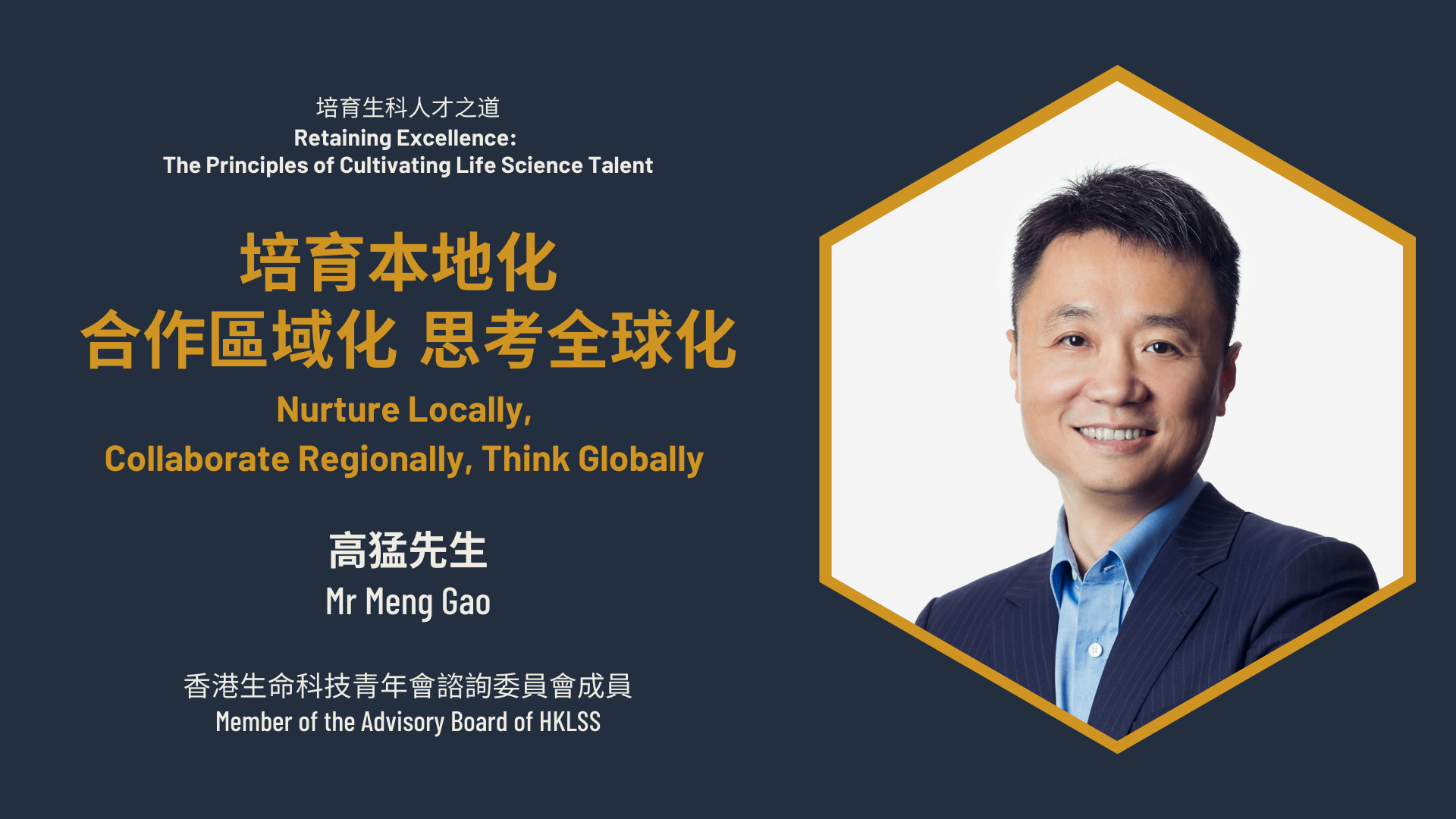A comprehensive life sciences ecosystem rests upon sufficient and positive interaction among its up-, mid-, and downstream sectors. Hong Kong, home to five of the world’s top 100 institutions according to QS University Rankings 2024, has a definite upstream strength. To maintain its academic advantage, the city should adopt a multifaceted approach to training a new generation of professionals, as suggested by Mr Meng Gao, Group Chief Investment Officer at Nan Fung Group, who oversees the Group's investment activities and strategic initiatives including Pivotal Life Sciences.
“Investing in science education at the school level and encouraging biotech research at the college level and beyond will help nurture homegrown talent, whereas grants and scholarships are essential to attract competent candidates locally and abroad,” comments Gao, while emphasizing the importance of a diversified talent pool, “When it comes to attracting talent, we should not only focus on life sciences, but also IT, finance, legal, and more.”
As a member of Hong Kong Life Sciences Society (HKLSS) Advisory Board, Gao acknowledges the Society’s work in this area, stating, “HKLSS's flagship programs can attract and create a pipeline of young talent.” Among the programs, he shares a personal reflection on its annual Mentorship Scheme, where he served as a mentor: “Keeping abreast of what’s going on in the campus and with the younger generation is very exciting. It helps me contemplate how I can better utilize my experience to excel in my career. The learning is mutually beneficial.”
Gao’s experience stands as a testament to the synergy brought to the field by HKLSS, whose mission is to build a dynamic ecosystem in Hong Kong. To turn this vision into reality, the involvement of the government is instrumental. “The HKSAR government is implementing policies to attract non-local talent and foster translational research. The establishment of the Hong Kong-Shenzhen Innovation and Technology Park further demonstrates its commitment to providing a favorable environment for life sciences and tech companies,” the industry expert says.
To be completed in phases starting this year, the Park has life and health technology among its six core functions, with an InnoLife HealthTech Hub in the works. In addition to setting aside HK$10 billion to promote the sector, the government launched The Office for Attracting Strategic Enterprises with life and health technology as a key target industry.
Situated at Lok Ma Chau along the border adjacent to Huanggang Port, the Park exemplifies the strategic location of the Special Administrative Region. “Hong Kong benefits from its proximity to a vast market not only in the Greater Bay Area but also in Mainland China as a whole,” highlights Gao, stressing, “To position itself as a tech hub for Mainland China and the wider region, Hong Kong can consider strengthening collaboration with Mainland China in R&D and advanced manufacturing, while maintaining a global perspective is crucial.”
Indeed, cross-border collaboration is a proven success. According to the Global Innovation Index 2023, the Shenzhen‑Hong Kong‑Guangzhou Science and Technology clusters ranked second globally in terms of the number of patents and scientific publications.
“The future of the life sciences and biotech landscape in Hong Kong appears promising, especially in the longer term,” concludes Gao, whose optimistic outlook is widely shared. Noting that every economic pillar takes time to develop, the financial specialist trusts that dedicated organizations like HKLSS can play a pivotal role in accelerating the progress. “By building a vibrant biotech ecosystem through connecting companies, talent, and academia, HKLSS can foster a conducive environment for growth and generate more industry opportunities, further solidifying Hong Kong's position in the biotech landscape.”








